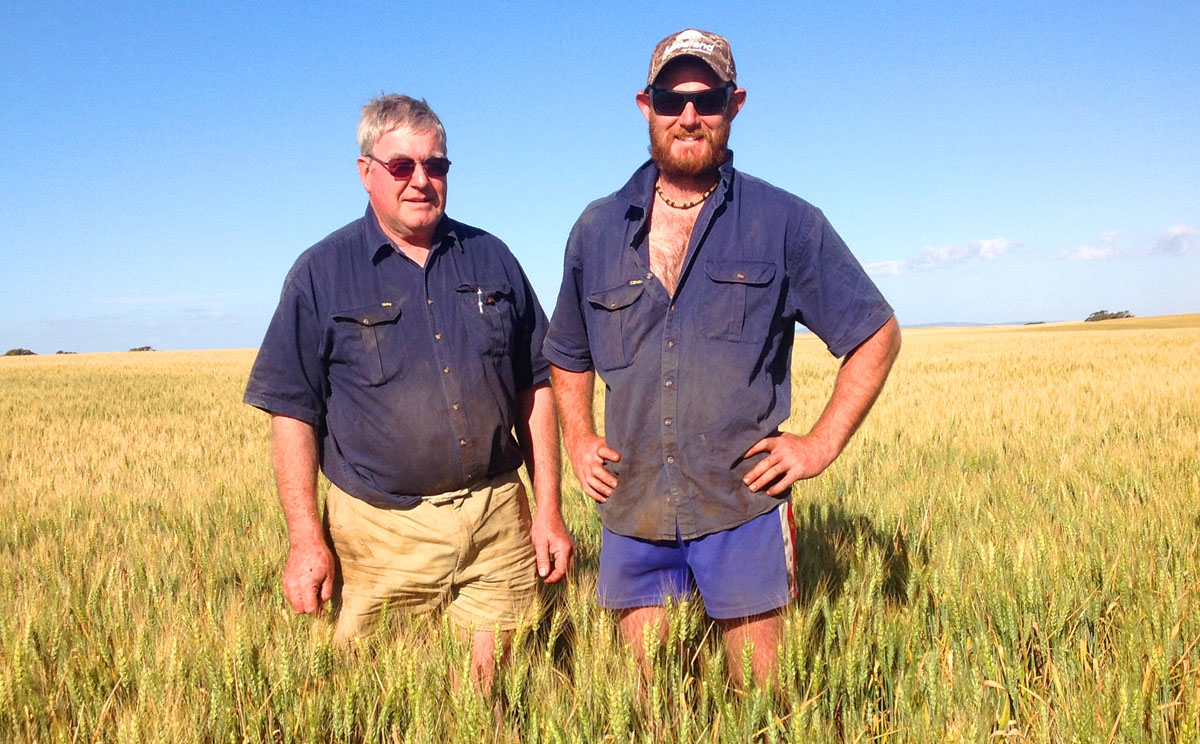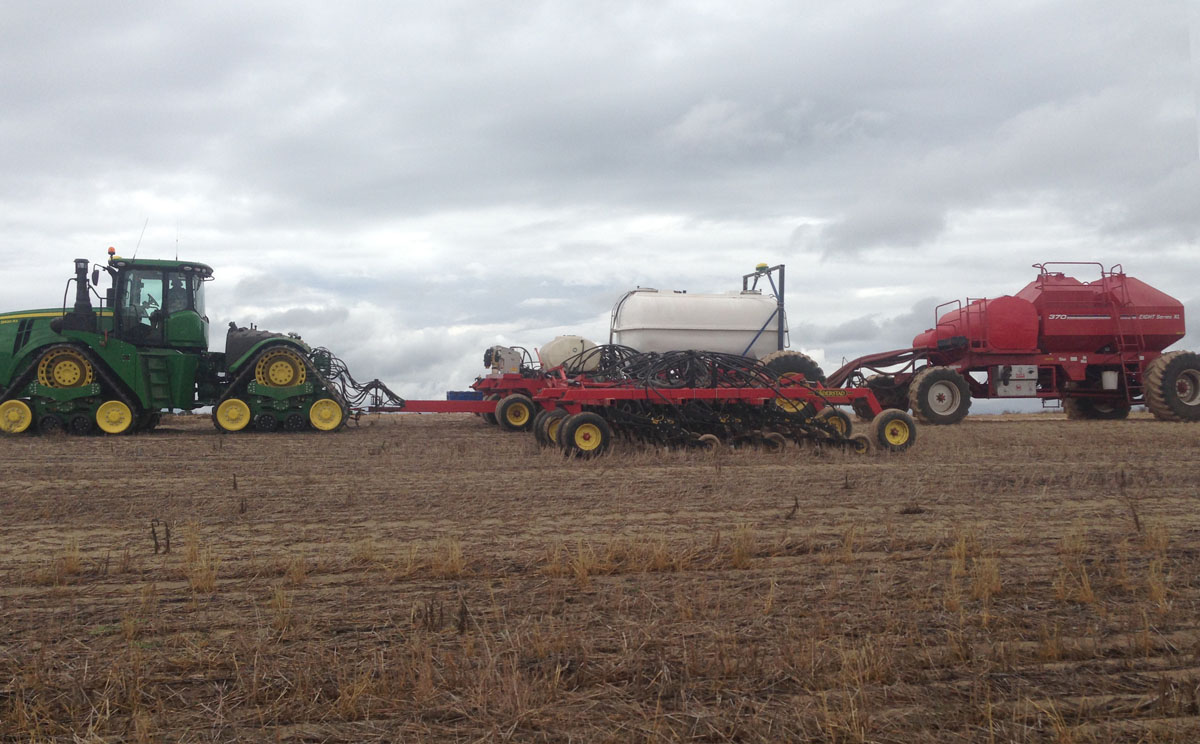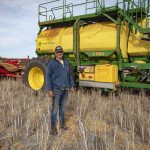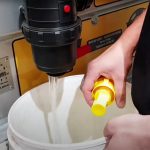Targeted liquid placement saves on inputs, improves uptake & 19% yield increase
The ability to apply a continuous stream of liquid is a key feature of Liquid Systems (SA) equipment for Lock grower Andrew Polkinghorne and his family.
“It’s a technically superior system, there’s no doubt about that,” said Andrew.
“Some of our country is stony, so we have to slow down when seeding. With Liquid Systems, you can still maintain a continuous stream and that’s an important part of achieving a positive field response. The other equipment we were using couldn’t do that under certain circumstances”.
| OUTCOMES |
|---|
- 19% yield increase
- Better soil health: increased microbial activity, more carbon cycling, less root disease and more robust crops
- Improved zinc uptake, from 14 ppm to up to 70 ppm
- Better crop response to nitrogen due to phosphorous availability
The Polkinghornes, mixed enterprise growers who crop 5500ha of mostly wheat, barley, canola and lentils on South Australia’s Eyre Peninsula, originally self-engineered a system in 2003. “In those days there wasn’t much equipment around, so we had to adapt our own set-up. Obviously, it’s been refined since going to Liquid Systems,” said Andrew.
Encouraged by trials conducted by Dr. Bob Holloway, they applied liquid phosphorous and trace elements with immediate results. “The main driver behind our move to liquids was yield and profitability,” said Andrew. “Trials that Dr. Bob Holloway did in our area and on our farm showed very clearly that liquids in-furrow delivered a consistent yield increase. On average, that was a 19% yield increase.
It changed the profitability of our farm dramatically”
The Polkinghornes upgraded to Liquid Systems (SA) equipment in 2012 when they purchased a second-hand Morris air seeder equipped with a Liquid Systems (SA) pump and distribution system. They have progressively added extra modules over four years to increase the flexibility of their system, such as the G22 module with Dual Stacker kit, which allows them to apply a range of liquid products separately, as well as target liquid placement.
“We wanted two distribution systems to inject fungicides and wetting agents separately from the fertiliser and trace elements,” said Andrew. “We were looking to place our liquid phosphorous and trace element mix down deep and to the side of the seed and put the fungicide or soil ameliorant with the seed.”
In 2016 the Polkinghornes added the Spiker module to avoid compatibility issues between liquid phosphorous and the fungicide Flutriafol.
“The Spiker module allows us to inject Flutriafol into the liquid stream just before it goes into the soil, so we don’t have to worry about any adverse reactions or blockages in the system,” said Andrew. “It also keeps our fungicide at a constant rate, even when the phosphorous and trace elements are put out at a variable rate.”
Typically, the family applies between six to 12 kg/ha of phosphorous via liquid delivery, which Andrew says has improved their crops’ nitrogen response. “The crops make better use of the nitrogen now, simply because the phosphorous is more available,” he said. “As a result we’ve lifted our base yield potential.”
In addition to liquid phosphorus, the Polkinghornes apply 1kg/ha of zinc sulphate, 2kg/ha of manganese sulphate and 150 to 200g/ha of copper sulphate. They spike Flutriafol in-furrow at 200 to 300mL/ha and UAN at a rate of 40L/ha. In particular, Andrew has seen a significant improvement in the soil’s zinc levels. Plant tissue tests taken up to 40 years ago when the farm was cleared showed zinc deficiencies at 14 parts per million (ppm). “We started applying zinc on granular fertiliser and then converted to using a boom sprayer. If we were really lucky we’d increase the zinc levels to 30 ppm.
Using the Liquid Systems (SA) equipment, we’re applying a quarter of the amount of zinc and levels are quite easily up to 70 ppm.”
Andrew is convinced soil health has improved. “I’m sure our soil health is better,” he said. “We grow more dry matter with liquids because the plants grow bigger and better. I think we’ve got more carbon cycling and therefore better microbial activity within our soil, as well as far less root disease. And our crops are generally more robust.”
Get a Quote
"*" indicates required fields






